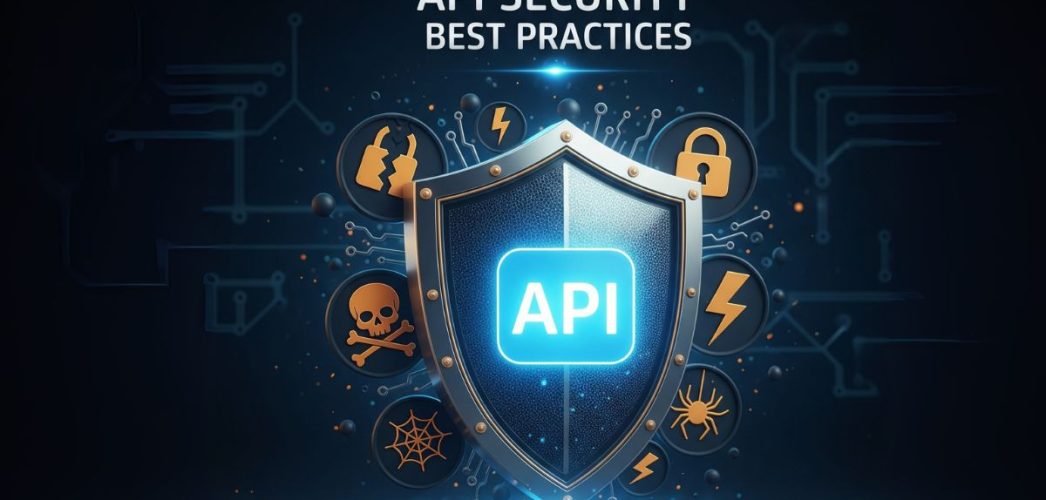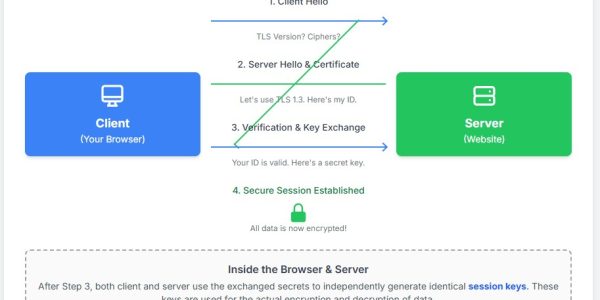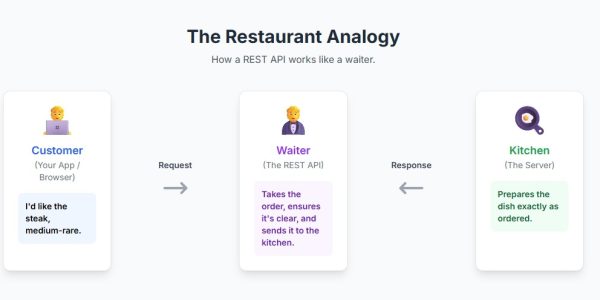In 2023, a major automotive brand accidentally exposed sensitive customer data, including financing details and home addresses. The culprit? A misconfigured API endpoint that lacked proper authorization checks. This wasn’t a sophisticated, nation-state attack; it was a simple oversight that had massive consequences.
This story is becoming alarmingly common. As APIs evolve from simple data connectors to the very backbone of modern applications—powering everything from your mobile banking app to your IoT coffee maker—they have also become a primary target for attackers. The speed of modern development often pushes security to the back burner, creating vulnerabilities that can be easily exploited.
This is why understanding and implementing API security best practices is no longer optional; it’s a fundamental requirement for any business operating online. Ignoring API security is like leaving the vault door of your bank wide open.
In this comprehensive guide, we will walk you through the most critical API security principles. We’ll move beyond the basics and give you actionable strategies to protect your data, your customers, and your reputation. Whether you’re a developer, a DevOps engineer, or a security professional, this guide will equip you with the knowledge to build a robust defense.
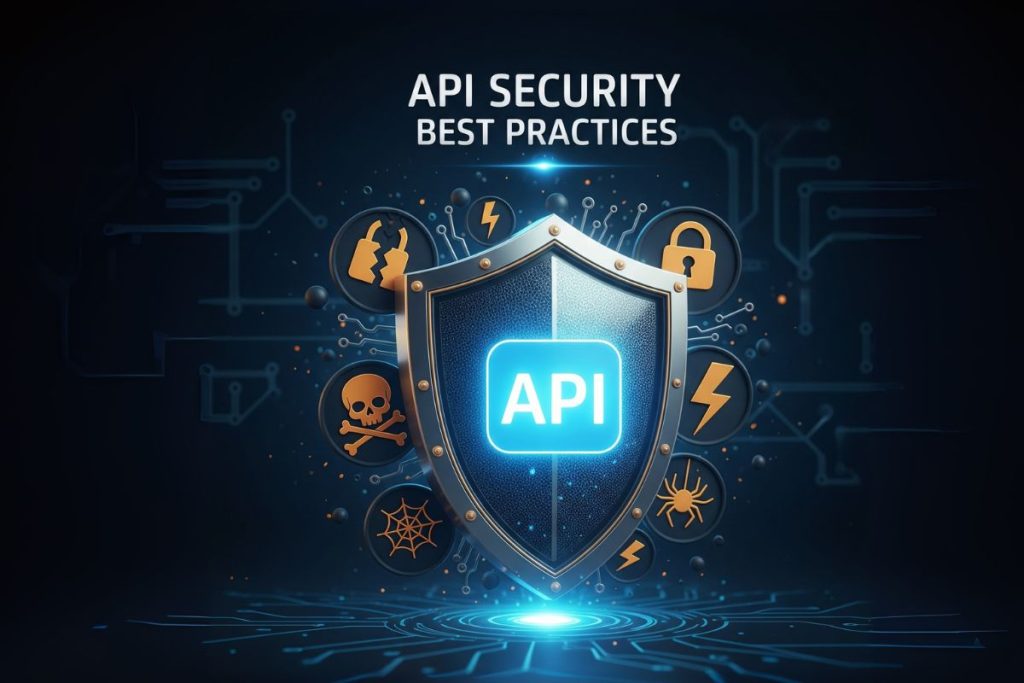
What is API Security? And Why Does It Matter So Much?
API Security is the practice of preventing and mitigating attacks against Application Programming Interfaces (APIs). Because APIs expose application logic and sensitive data, they are increasingly becoming a prime target for attackers. A weak API can lead to devastating data breaches, service disruptions, and financial loss.
The core challenge lies in the nature of APIs themselves. They are designed to be accessible. Your goal isn’t to lock them down completely but to ensure only the right people (or systems) can access the right data in the right way. This delicate balance is the essence of effective API security best practices.
The Foundation: The OWASP API Security Top 10
To structure our approach, we’ll lean on the industry-standard framework from the Open Web Application Security Project® (OWASP). The [external link: OWASP API Security Top 10] list highlights the most critical security risks facing APIs today. Let’s dive into these vulnerabilities and the best practices to counter them.
1. Authentication: Who Are You?
Authentication is the process of verifying a user’s or client’s identity. Without strong authentication, you have no idea who is making requests to your API.
Best Practice: Implement Robust Authentication Mechanisms
Never rely on simple, non-expiring API keys alone. Use modern, standardized authentication protocols.
- OAuth 2.0 and OpenID Connect (OIDC): These are the industry standards for delegated authorization and authentication. They allow third-party applications to gain access to a user’s resources without exposing their credentials.
- JSON Web Tokens (JWT): Use JWTs to securely transmit information between parties as a JSON object. Ensure your JWTs are signed (using algorithms like RS256) and have short expiration times (
expclaim). - Multi-Factor Authentication (MFA): For sensitive operations, enforce MFA to add an extra layer of security beyond just a token.
2. Authorization: What Are You Allowed to Do?
Authentication confirms identity, but authorization determines permissions. This is where many of the most damaging breaches occur. The two most critical vulnerabilities identified by OWASP are Broken Object Level Authorization (BOLA) and Broken Function Level Authorization (BFLA).
Best Practice: Enforce Granular Authorization Checks on Every Request
Never assume that if a user can access one thing, they can access everything.
- Broken Object Level Authorization (BOLA / IDOR): This happens when a user can access objects they shouldn’t by manipulating the ID in an API call (e.g., changing
GET /api/v1/orders/123toGET /api/v1/orders/456).- Solution: For every single request that accesses a data object, verify that the authenticated user has ownership or permission to access that specific object. Tie the object ID to the user ID from the authentication token.
- Broken Function Level Authorization (BFLA): This occurs when a user can execute admin functions they aren’t authorized for (e.g., a regular user accessing
POST /api/v1/admin/deleteUser).- Solution: Your API should have a clear distinction between user roles and admin roles. Deny all requests by default and explicitly grant access to functions based on the user’s role. Check the user’s permissions on every sensitive function call, not just at login.
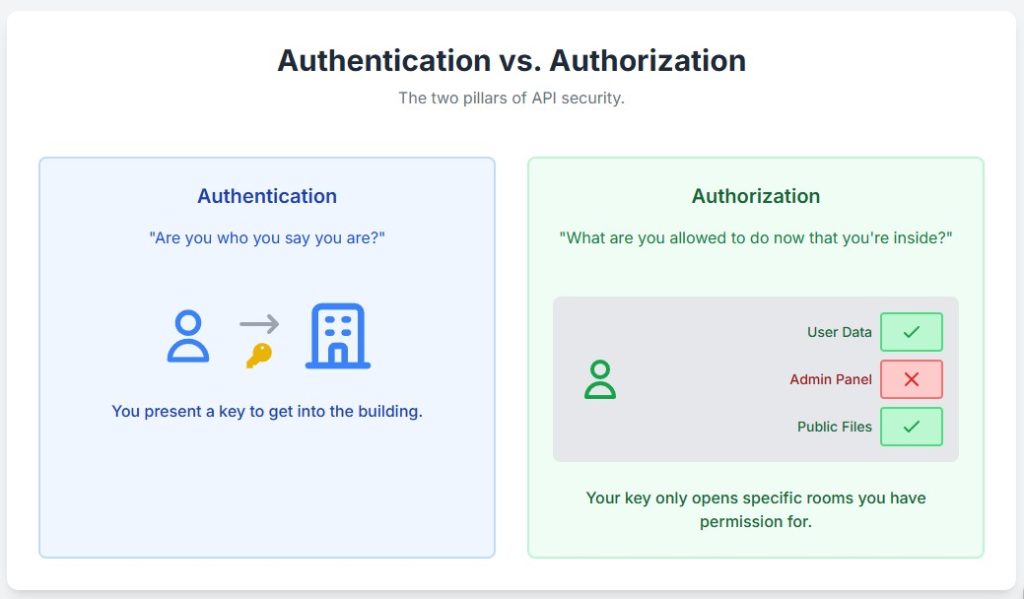
3. Data Handling: Protecting Data in Transit and at Rest
Even authorized users can be a risk if the data they are handling is not properly protected.
Best Practice: Encrypt Everything and Limit Data Exposure
- Use TLS Everywhere: Enforce Transport Layer Security (TLS) 1.2 or higher for all API communication to encrypt data in transit. This prevents man-in-the-middle attacks. Learn more about TLS encryption.
- Encrypt Sensitive Data at Rest: Don’t store passwords, API keys, or personally identifiable information (PII) in plain text in your database. Use strong hashing algorithms like bcrypt for passwords and encryption for other sensitive data.
- Minimize Data Exposure: Design your API responses to only return the data that is absolutely necessary for the client to function. Avoid sending back entire database objects. For example, a user profile endpoint shouldn’t return the user’s password hash or internal IDs.
4. Input Validation: Don’t Trust User Input
One of the oldest rules in security is to never trust data coming from the client. Malicious input can lead to a wide range of attacks, including Injection attacks (SQL, NoSQL, Command Injection) and Cross-Site Scripting (XSS).
Best Practice: Implement Strict Input Schema Validation
- Define a Schema: For every endpoint, define a strict schema for the expected request body, parameters, and headers. This includes data types, required fields, string patterns (using regular expressions), and value ranges.
- Reject, Don’t Sanitize: If an input doesn’t match the schema, reject the request with a
400 Bad Requesterror. Trying to “sanitize” or clean up bad input is error-prone and can often be bypassed. - Use Parameterized Queries: To prevent SQL injection, always use prepared statements or parameterized queries. Never construct database queries by concatenating strings with user input.
5. Rate Limiting and Throttling: Preventing Abuse
Without limits, attackers can overwhelm your API with requests, leading to a Denial of Service (DoS) or brute-force attacks on credentials. Even non-malicious clients can cause issues with buggy code that sends too many requests.
Best Practice: Enforce Strict Rate Limiting
- Set Reasonable Limits: Implement rate limiting based on the client IP address, API key, or user ID. For example, you might allow 100 requests per minute.
- Communicate Limits: Use HTTP headers like
X-RateLimit-Limit,X-RateLimit-Remaining, andX-RateLimit-Resetto inform clients about their current status. - Implement Throttling: When a client exceeds the limit, return a
429 Too Many Requestsstatus code. You can also implement throttling to temporarily slow down a noisy client.
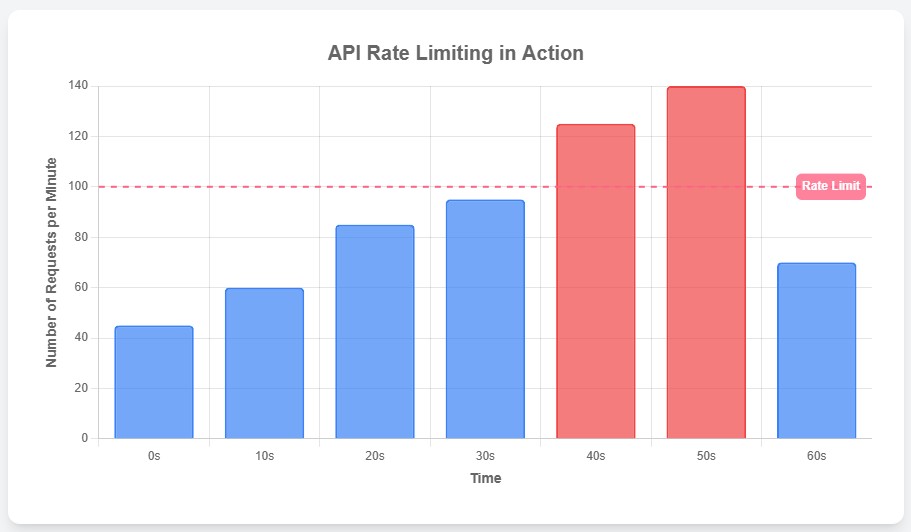
6. Security Misconfiguration: Hardening Your Stack
Vulnerabilities can often stem not from the code itself, but from the misconfiguration of the underlying stack—servers, databases, containers, or cloud services.
Best Practice: Automate and Standardize Your Configurations
- Use Infrastructure as Code (IaC): Use tools like Terraform or CloudFormation to define your infrastructure in code. This makes configurations repeatable, auditable, and easier to secure.
- Follow the Principle of Least Privilege: Ensure your cloud IAM roles and server permissions are scoped down to the absolute minimum required for the application to function.
- Disable Unnecessary Features: Turn off unused HTTP methods (e.g., if you only use
GETandPOST, disableDELETE,PUT, etc.), disable directory listings, and remove default accounts or passwords. - Keep Dependencies Updated: Regularly scan and update all your libraries, frameworks, and system components to patch known vulnerabilities. Tools like Dependabot or Snyk can automate this.
7. Logging and Monitoring: Your Eyes and Ears
You can’t protect against what you can’t see. Without proper logging and monitoring, you won’t know if your API is under attack until it’s too late.
Best Practice: Log Everything and Set Up Real-Time Alerts
- Log All Key Events: Log all API requests and responses, including successes and failures. Crucially, log authentication and authorization events (both successful and failed attempts).
- Centralize Your Logs: Use a centralized logging system (like an ELK stack or a cloud-based service) to aggregate logs from all your services.
- Monitor for Anomalies: Manually sifting through millions of log entries is impossible. This is where automated systems excel. Set up alerts for high rates of failed logins, authorization errors, spikes in traffic from a single IP, or requests for non-existent endpoints.
While setting up this level of monitoring can be complex, it’s a non-negotiable part of modern API security best practices. For organizations looking to accelerate this, solutions from companies like Infineural Technologies leverage AI and machine learning to analyze API traffic in real-time, detecting sophisticated threats and anomalies that traditional rule-based systems might miss.
8. Proper Inventory Management: You Can’t Secure What You Don’t Know You Have
As organizations grow, they often lose track of all the APIs they’ve deployed. “Shadow” APIs (deployed without IT’s knowledge) and “Zombie” APIs (old, unmaintained versions) are a huge security risk because they aren’t being patched or monitored.
Best Practice: Maintain a Comprehensive API Inventory
- Automate Discovery: Use API discovery tools to scan your networks and cloud environments to find all running API endpoints.
- Document Everything: For every API, document its purpose, owner, version, security requirements (e.g., authentication type), and data sensitivity level.
- Implement a Decommissioning Process: Have a clear process for retiring old or unused API versions. This should include updating clients and shutting down the old endpoints completely.
The Next Level of API Security with Infineural Technologies
Following these manual best practices is a fantastic start and forms the foundation of a strong security posture. However, in today’s fast-paced CI/CD environments, relying solely on manual checks and configurations can leave dangerous gaps.
Modern development requires modern security—a proactive, automated approach that is embedded directly into the software development lifecycle.
This is the challenge Infineural Technologies was built to solve. Our platform integrates seamlessly into your existing toolchain, providing:
- Automated Security Testing: We scan your APIs for vulnerabilities like BOLA, BFLA, and Injection flaws before they ever reach production.
- Real-time Threat Detection: Our AI-powered monitoring engine analyzes your live API traffic to identify and block attacks as they happen.
- A Living API Inventory: We automatically discover and catalog all your APIs, giving you a complete picture of your attack surface.
By shifting security left and automating threat response, you can empower your developers to build and innovate quickly without sacrificing security.
Conclusion: Make Security Part of Your API’s DNA
APIs are the engines of digital transformation, but their power comes with responsibility. A single vulnerability can have catastrophic consequences for your business and your customers.
By adopting these API security best practices—from enforcing strong authentication and authorization to implementing robust logging and validation—you build layers of defense that make your applications resilient. It’s a continuous process of vigilance, testing, and improvement. Start by focusing on the most critical areas like authorization and input validation, and gradually mature your security posture over time.
Don’t wait to become another headline. Make security a core component of your API strategy from day one.
Ready to Fortify Your APIs?
Building secure APIs is complex, but you don’t have to do it alone. If you’re ready to automate your API security and build with confidence, we can help.
Talk to an Infineural Technologies expert today to see how our platform can protect your most critical assets.
